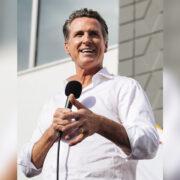LAST week, Gov. Gavin Newsom released an updated state budget proposal that cuts $283 million in funding from the Equitable Building Decarbonization Program (EBD) — a 30% reduction. The proposed cuts could deny access to no-cost clean energy upgrades for tens of thousands of low-income households who otherwise would be eligible for the program.
The EBD program is designed to support low-income households with energy-saving home upgrades, like weatherization and zero-emission heat pumps, at no cost to the resident. Studies have found heat pumps to be more efficient than air conditioner units, and they can also provide space heating more efficiently than gas furnaces, saving customers money on their utility bills.
In addition, the EBD program is critical for public health and safety amid rising temperatures. Currently, about a quarterof Californians lack access to cooling in their homes, while extreme heat events are growing in severity and frequency. Extreme heat is dangerous for vulnerable populations like children, seniors, and the disabled and puts low-income and communities of color at an elevated risk. The EBD Program can mitigate the impact of extreme heat by keeping our homes cool and comfortable.
The EBD Program can also help improve air quality in California by reducing climate emissions and other pollutants caused by gas-powered appliances. This is critical because the American Lung Association’s most recent “State of the Air” report found that over 9 in 10 people in California live in a community impacted by unhealthy levels of ozone and/or particle pollution. A major culprit of the unhealthy indoor and outdoor air quality is gas-burning appliances in our homes, which emit four times more nitrogen oxide pollution than the state’s gas power plants. Likewise, homes and buildings are the second leading contributor of greenhouse gas emissions in the state.
In response to these proposed cuts, a coalition of climate and environmental justice advocates are calling on the governor to restore funding to the EBD program, and bolster it with an additional $400 million in a climate bond that will go before voters on the November ballot. And while California is facing higher than expected revenue deficits, advocates argue that the state cannot afford to delay its critical climate and clean energy goals.
Despite its perceived climate leadership, California is projected to miss 2030 greenhouse gas reduction targets by seventeen years. Cuts to the EBD Program will undermine the state’s goal of creating 3 million climate-ready homes equipped with heat pumps by 2030 and 7 million by 2035. This goal includes a target of deploying 6 million heat pumps by 2030. To date, there are only 1.5 million heat pumps installed in about 800,000 homes — and to meet this target, California would need to more than triple its rate of heat pump adoption.
Legislative budget hearings on the revised budget will begin this week and provide the public an opportunity to learn more about the proposals. The public should contact legislators directly to let them know their views on the governor’s proposals.
With so much at stake, the state budget will be a key indicator of the administration’s ability to stick to its commitments on climate and clean energy. While low-income communities are most impacted by climate change and pollution, they are the least able to afford solutions. Maintaining funding for programs like the EBD Program is critical to protect our most vulnerable communities and stay on track to meet California’s ambitious climate goals. n







